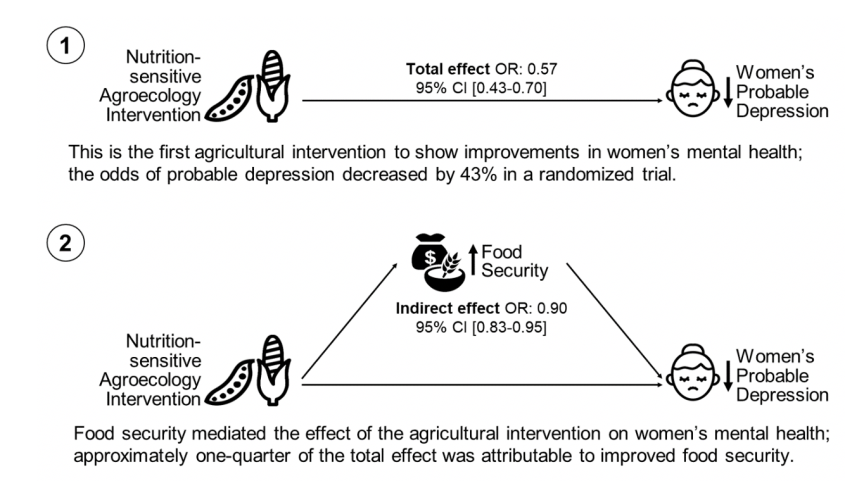
The Paper of the Month for July is from Public Health Nutrition and is entitled "Food security mediates the decrease in women’s depressive symptoms in a participatory nutrition-sensitive agroecology intervention in rural Tanzania" by Marianne V Santoso et al.
“I believe it,” said Maria, looking at the hand-colored bar graph taped to the wall.
“Are you sure? It seems high to me”, I said.
Maria is a smallholder farmer in rural Singida, Tanzania. We worked together for the past few years on the Singida Nutrition and Agroecology Project (SNAP-Tz), a nutrition-sensitive agroecological intervention that sought to improve children’s diet. In it, farmers learned about and experimented with sustainable agriculture, nutrition, and gender equity using an integrated and participatory curriculum. That process brought Maria and I here, standing in a room full of graphs showing various impacts of SNAP-Tz.
The graph in front of us was striking: our intervention had lowered the odds of probable maternal depression by a whopping 43%!
As nutritionists, we are not used to thinking about how an agriculture intervention could impact mental health, but here, the writing was literally on the wall. We decided to analyse this relationship further, and that is how our article in Public Health Nutrition was conceived. SNAP-Tz decreased the proportion of household experiencing moderate and severe food insecurity by 12.5 points, so it seemed plausible that reduced food insecurity could affect women’s mental health. After all, the association between the two is well-established, although previous evidence has primarily been observational.
screenshot_2021-07-26_at_16.08.30.png
We set out to quantify food insecurity’s role in mediating SNAP-Tz’s effect on depressive symptoms. Many months of analyses later, we had our answer: Reductions in food insecurity accounted for approximately 10% of the decrease in odds of probable depression, implying that changes in food insecurity explained about one-quarter of SNAP-Tz’s impact on depression. These results contribute to an idea of mutual leverage between mental health and food security interventions that has been gaining momentum globally.
As is the case with much of research, these exciting results open the door to more questions. What drives the rest of SNAP-Tz’s impact on mental health? For now, we can only speculate. SNAP-Tz was designed to target issues surrounding gender equity and social support, as well as to maintain farmers’ autonomy and foster individual and community engagement. Moreover, SNAP-Tz encouraged men to contribute to ensuring household children’s nutrition and food security, and provided group settings for farmers to share experiences and solve problems together. All of the above have been associated with women’s mental health.
It was exciting to Maria and I that a nutrition-sensitive agroecology intervention could improve well-being beyond nutrition. However, while our team may have been the first to measure this impact, we don’t think SNAP-Tz is the only such study that can improve mental health. We suspect many agriculture and nutrition interventions have the potential to reduce maternal depressive symptoms.
It is our hope that researchers doing similar interventions make it standard practice to measure depressive symptoms and overall mental health—Maria and I cannot wait to hear what you learn.
